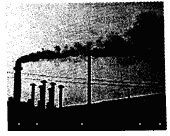
创建自己的小题库
搜索
【简答题】


 Everyone agrees that it’s necessary to reduce carbon emissions (排放物) around the world. There is less agreement over exactly how nations should go about achieving a more carbon - free planet. Thus, the environmental equivalent: cap – and – trade carbon emissions, or place a carbon tax on all users? With cap – and – trade programs, governments limit the level of carbon produced by an industry. Companies that hold their emissions below the cap can sell their remaining allowance on a carbon market, while companies that go beyond their limit must purchase credits on that market. Carbon taxes are more straightforward: a set tax rate is placed on the consumption of carbon with the idea that raising the price will encourage industries and individuals to consume less. At the moment, cap – and – trade has the upper hand, but doesn’t defeat the tax just yet. Supporters of the tax argue that a cap – and – trade system would be too difficult to administer – and too easily d by industries looking to sidestep emissions caps. Cap – and – trade advocates contradict that like all other flat taxes, a carbon collection would relatively burden lower – income families, who spend a greater percentage of their income on energy than rich households. So which system will have a larger effect on carbon consumption? A 10% carbon tax might reduce the demand for carbon about 5 % or less, according to an ysis by the Carbon Tax Center, an environmental advocacy group. That may not be enough. Businesses and governments haven’t figured out how the two competing systems can work together, but in the end, the world may need both. 1. The passage focuses on_________. A. programs of collecting taxes B. systems of reducing carbon emissions C. reasons for reducing carbon emissions D. contradictions between the two systems 2. According to the cap – and – trade program, companies_________ . A. are forbidden to produce carbon emissions B. are allocated the same amount of carbon consumption C. can sell their remaining allowance within their limits D. can sell the extra amount of carbon at a higher price 3. Carbon taxes work by _________. A. burdening well – off families B. encouraging industries to consume carbon C. raising the price for carbon consumption D. limiting the carbon consumption of industries only 4. The underlined word “cap” in the second paragraph most likely refers to_________. A. limit B. credit C. level D. rate 5. We can learn from the passage_________ . A. carbon taxes are difficult to carry out B. cap – and – trade plays a greater role at present C. cap – and – trade will be preferable in the future D. carbon taxes will be preferable in the future
Everyone agrees that it’s necessary to reduce carbon emissions (排放物) around the world. There is less agreement over exactly how nations should go about achieving a more carbon - free planet. Thus, the environmental equivalent: cap – and – trade carbon emissions, or place a carbon tax on all users? With cap – and – trade programs, governments limit the level of carbon produced by an industry. Companies that hold their emissions below the cap can sell their remaining allowance on a carbon market, while companies that go beyond their limit must purchase credits on that market. Carbon taxes are more straightforward: a set tax rate is placed on the consumption of carbon with the idea that raising the price will encourage industries and individuals to consume less. At the moment, cap – and – trade has the upper hand, but doesn’t defeat the tax just yet. Supporters of the tax argue that a cap – and – trade system would be too difficult to administer – and too easily d by industries looking to sidestep emissions caps. Cap – and – trade advocates contradict that like all other flat taxes, a carbon collection would relatively burden lower – income families, who spend a greater percentage of their income on energy than rich households. So which system will have a larger effect on carbon consumption? A 10% carbon tax might reduce the demand for carbon about 5 % or less, according to an ysis by the Carbon Tax Center, an environmental advocacy group. That may not be enough. Businesses and governments haven’t figured out how the two competing systems can work together, but in the end, the world may need both. 1. The passage focuses on_________. A. programs of collecting taxes B. systems of reducing carbon emissions C. reasons for reducing carbon emissions D. contradictions between the two systems 2. According to the cap – and – trade program, companies_________ . A. are forbidden to produce carbon emissions B. are allocated the same amount of carbon consumption C. can sell their remaining allowance within their limits D. can sell the extra amount of carbon at a higher price 3. Carbon taxes work by _________. A. burdening well – off families B. encouraging industries to consume carbon C. raising the price for carbon consumption D. limiting the carbon consumption of industries only 4. The underlined word “cap” in the second paragraph most likely refers to_________. A. limit B. credit C. level D. rate 5. We can learn from the passage_________ . A. carbon taxes are difficult to carry out B. cap – and – trade plays a greater role at present C. cap – and – trade will be preferable in the future D. carbon taxes will be preferable in the future

题目标签:排放物
如何将EXCEL生成题库手机刷题 分享
分享
 反馈
反馈 收藏
收藏 举报
举报参考答案:


举一反三

相关题目:

参考解析:


AI解析
重新生成

题目纠错 0
发布

 复制链接
复制链接 新浪微博
新浪微博 分享QQ
分享QQ 微信扫一扫
微信扫一扫





